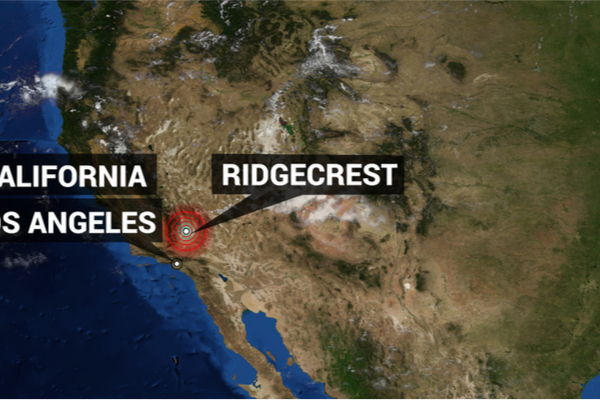After the recent earthquake near Los Angeles, some residents were left wondering why their ShakeAlert LA app hadn’t notified them. After all, a magnitude 6.4 earthquake rocked Ridgecrest, California, about 150 miles away, and that quake was the first test of ShakeAlert since the app was released in 2018. The system was working exactly as it was designed to, as the Los Angeles Times reported in the aftermath of the quake. While the shaking was intense in Ridgecrest, it wasn’t strong enough in LA to trigger the app to alert the people in Los Angeles County.
“On the surface, it seems like nothing worked.” Robert-Michael de Groot of the United States Geological Survey (USGS) said in an interview with The Verge. “But if you dig down into the details, everything worked as it should have yesterday. Really, even though people don’t like it, it still performed the way it should have”
The ShakeAlert system, which is run by USGS, measures the way earthquakes move through the ground. The first signs of an earthquake are primary waves, which move quickly, outpacing the slower secondary waves. Those secondary waves are the ones people care about: they cause dramatic shaking during an earthquake.
Researchers can detect and record both kinds of waves using specialized equipment stations, which are placed all over the West Coast. When an earthquake happens, the ShakeAlert system, which covers California, Oregon, and Washington state, picks up the primary waves and can send out alerts before strong shaking starts. Currently, most of the groups that get alerts are industries, hospitals, and emergency and transit systems — not the general public. Even a few seconds’ warning can let people take cover or stop what they’re doing before the shaking arrives.
Right now, de Groot says, ShakeAlert has built a little more than half of its planned 1,675 stations. The stations quickly calculate the magnitude of the quake and estimate the intensity of the shaking in nearby areas. That intensity is measured in something called the Modified Mercalli Intensity Scale, which goes from 1 to 10.
So here’s the design thing: even earthquakes with high magnitudes will have different intensities, depending on how far away a person is from the action. While Ridgecrest shook intensely, Las Vegas just saw some swinging light fixtures. The designers of the app figured that most people wouldn’t care about a high-magnitude earthquake that doesn’t really shake the earth. So the ShakeAlert LA app is designed to only send an alert if the magnitude is above 5 and the intensity hits a 4 or higher somewhere in Los Angeles County. While the Fourth of July quake met the first criteria, it didn’t come anywhere close to being shaky enough to trigger an alert.
The designers had assumed that people wouldn’t want to be notified for smaller earthquakes that didn’t cause any damage. After all, a plethora of articles has bemoaned our phones for pinging us for more and more mundane things. “We were actually on the verge of doing a speed test. A difficulty with delivering ShakeAlert is there isn’t really a model out there for delivering these sorts of messages really, really fast to lots and lots of people,” says de Groot.
“When you get push alerts on your phone, like Twitter telling you “so-and-so liked this tweet,” those notifications don’t go out to 10 million people or 5 million people simultaneously. They get staggered. ShakeAlert LA has to send the information to a lot of people really quickly. And so one of the things that we want to learn from this test is how fast is that delivery? How quickly does it get from us to the person holding the cellphone?”
This 4th of July surprise may help ShakeAlert’s makers design a system for the West Coast that’s more responsive to what people actually want from an earthquake app, and that’s to be told (a) everything’s a-okay, or (b) get the heck out of there, NOW.
—
Photo Credit: Sasa Kadrijevic / Shutterstock.com
